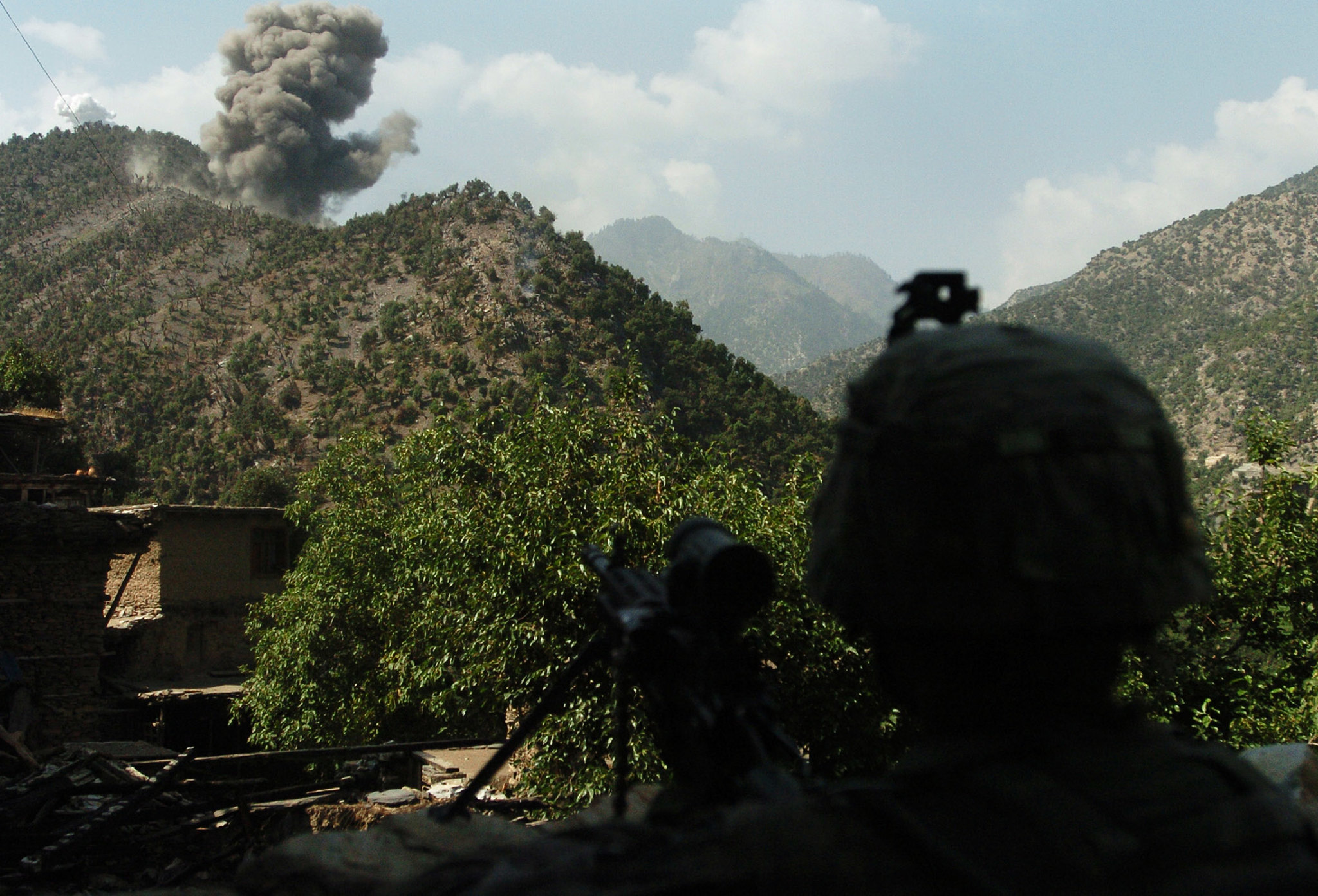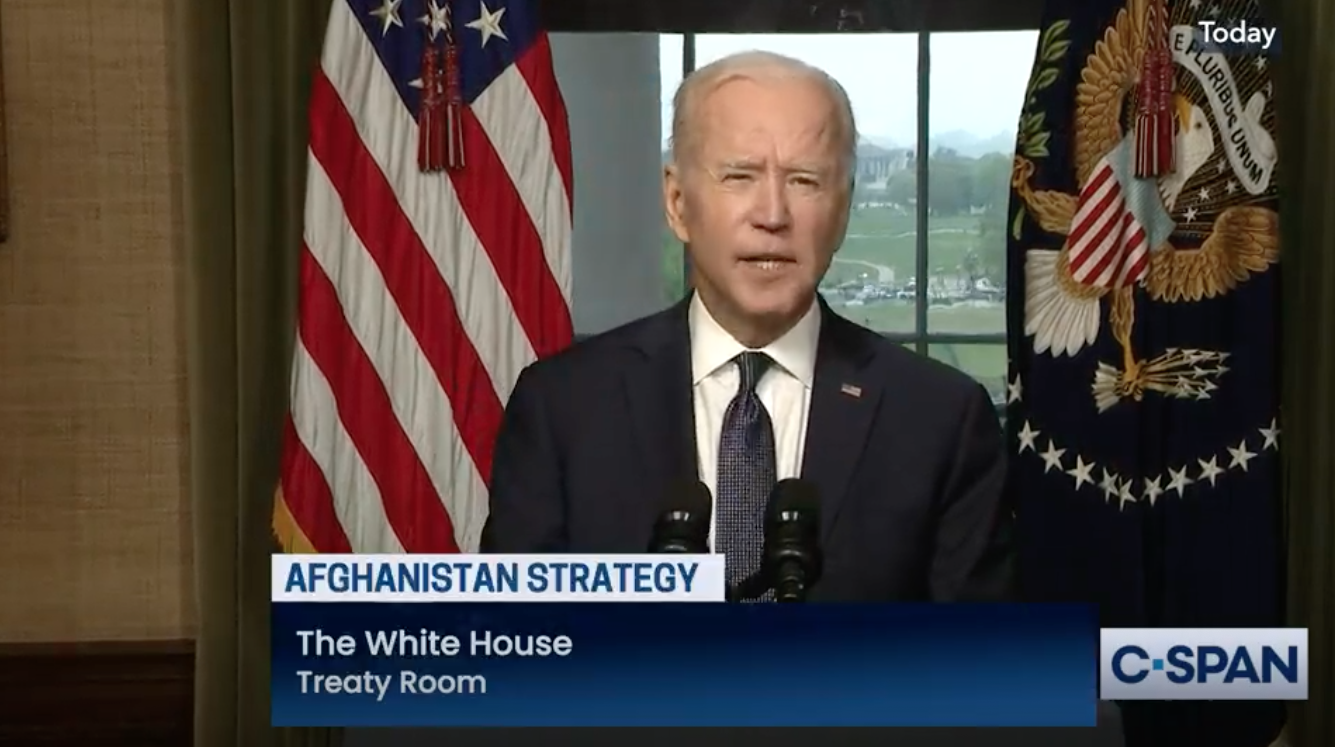Troops on the ground aren’t the only measure of horrific warfare, writes Norman Solomon. 
A U.S. Army soldier watching U.S. Air Force fighter jets attack positions in Afghanistan’s Korengal Valley, Aug. 13, 2009. (U.S. Army, Matthew Moeller)
ByNorman SolomonNormanSolomon.com

When I met a 7-year-old girl named Guljumma at a refugee camp in Kabul a dozen years ago, she told me that bombs fell early one morning while she slept at home in southern Afghanistan’s Helmand Valley. With a soft, matter-of-fact voice, Guljumma described what happened. Some people in her family died. She lost an arm.
Troops on the ground didn’t kill Guljumma’s relatives and leave her to live with only one arm. The U.S. air war did.
There’s no good reason to assume the air war in Afghanistan will be over when — according to President Joe Biden’s announcement on Wednesday — all U.S. forces will be withdrawn from that country.
What Biden didn’t say was as significant as what he did say. He declared that “U.S. troops, as well as forces deployed by our NATO allies and operational partners, will be out of Afghanistan” before Sept. 11. And “we will not stay involved in Afghanistan militarily.”
But Biden did not say that the United States will stop bombing Afghanistan. What’s more, he pledged that “we will keep providing assistance to the Afghan National Defense and Security Forces,” a declaration that actually indicates a tacit intention to “stay involved in Afghanistan militarily.”
And, while the big-type headlines and prominent themes of media coverage are filled with flat-out statements that the U.S. war in Afghanistan will end come September, the fine print of coverage says otherwise.
The banner headline across the top of The New York Times homepage during much of Wednesday proclaimed: “Withdrawal of U.S. Troops in Afghanistan Will End Longest American War.”
Buried in Coverage
But, buried in the 32nd paragraph of a story headed “Biden to Withdraw All Combat Troops From Afghanistan by Sept. 11,” the Times reported: “Instead of declared troops in Afghanistan, the United States will most likely rely on a shadowy combination of clandestine Special Operations forces, Pentagon contractors and covert intelligence operatives to find and attack the most dangerous Qaeda or Islamic State threats, current and former American officials said.”
President Joe Biden announcing U.S. troop withdrawal from Afghanistan, April 14. (C-Span still)
Matthew Hoh, a Marine combat veteran who in 2009 became the highest-ranking U.S. official to resign from the State Department in protest of the Afghanistan war, told my colleagues at the Institute for Public Accuracy on Wednesday:
“Regardless of whether the 3,500 acknowledged U.S. troops leave Afghanistan, the U.S. military will still be present in the form of thousands of special operations and CIA personnel in and around Afghanistan, through dozens of squadrons of manned attack aircraft and drones stationed on land bases and on aircraft carriers in the region, and by hundreds of cruise missiles on ships and submarines.”
Martin comments: Yes, as per usual, one has to read between the lines. Biden basks in the glory of peacenik Wokeness while the carnage in Afghanistan morphs from troops to drones and missiles. Smoke and mirrors.

Get your copy from our Online Store or your local book and magazine retailer
Australian Retail Locations » Uncensored Publications Limited
New Zealand Retail Locations » Uncensored Publications Limited
As censorship heats up and free thought becomes an increasingly rare commodity, we appeal to our readers to support our efforts to reach people with information now being censored elsewhere. In the last few years, Uncensored has itself been censored, removed from the shelves of two of our biggest NZ retailers – Countdown Supermarkets and Whitcoulls Bookstores – accounting for 74% of our total NZ sales.
You can help keep the Free Press alive by subscribing and/or gifting a subscription to your friends and relatives.








